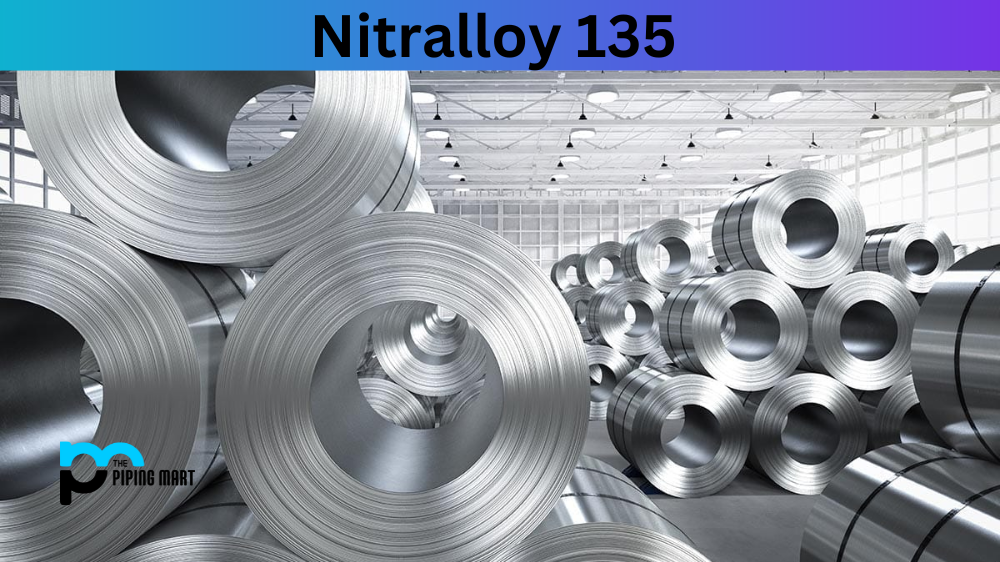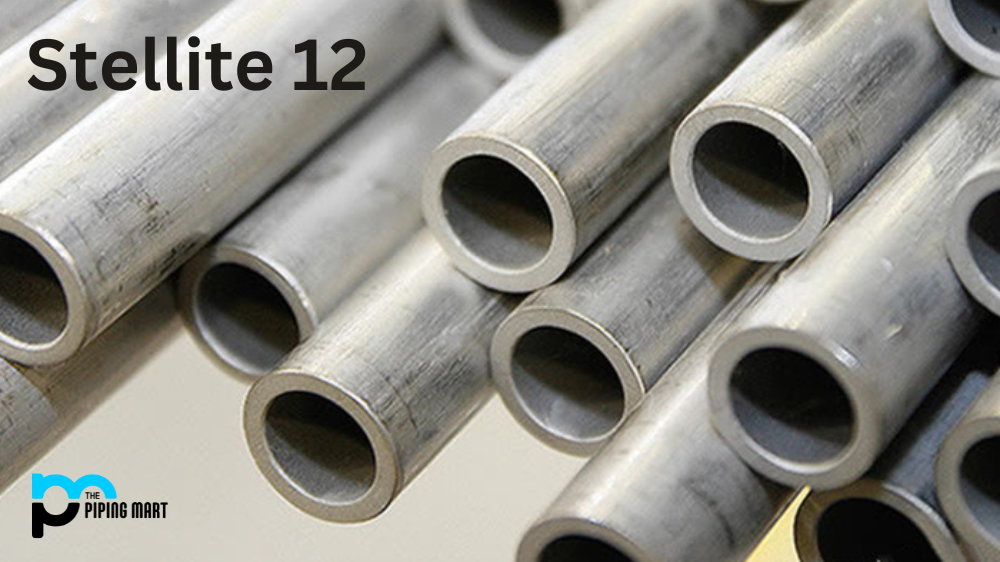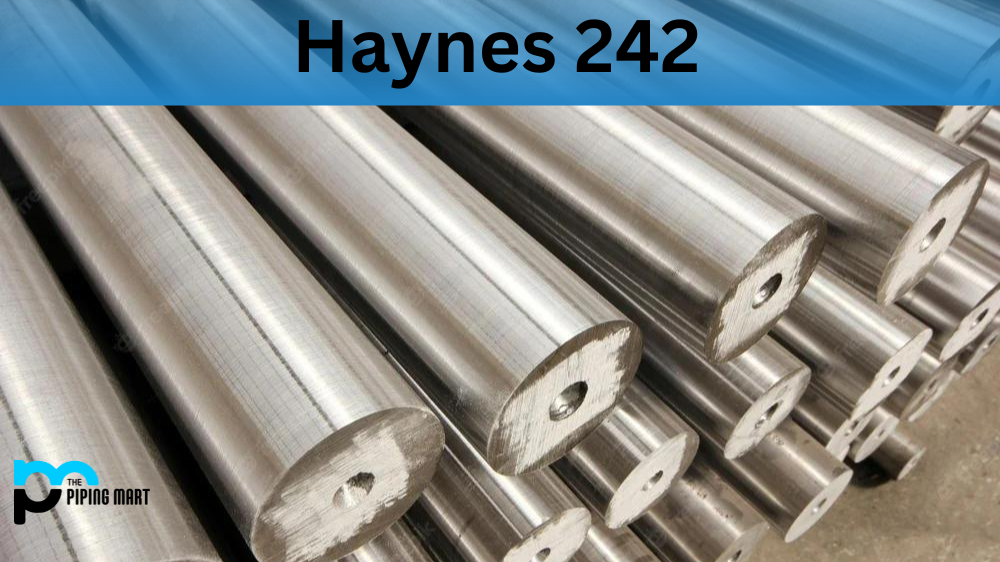Nitralloy 135 is a quench and tempered, age-hardening alloy steel that offers high strength, corrosion resistance, and improved machinability. It is used in various applications that require extreme wear and fatigue resistance, such as aerospace, automotive, oil and gas, and power generation. But how does Nitralloy 135 achieve these properties, and what makes it such a revered alloy steel in the industry? In this blog post, we will explore the composition, mechanical and physical properties, uses, and processing techniques of Nitralloy 135.
Nitralloy 135 Composition
Nitralloy 135 is primarily made of iron, with small amounts of carbon, manganese, chromium, molybdenum, silicon, aluminium, and titanium. The most significant contributor to its unique properties is the presence of nitrogen and aluminium, which form hard nitride and oxide precipitates during heat treatment. These precipitates impart high wear and corrosion resistance to the material and improve its fatigue strength and toughness.
| CHEMICAL COMPOSITION | |||||||||
|---|---|---|---|---|---|---|---|---|---|
| C 0.38 – 0.43% Max | Mo 0.30 – 0.40% | Mn 0.50 – 0.80% | Al 0.95 – 1.30% | Si 0.20 – 0.40% | |||||
| Ni 0.25% max | Cr 1.40 – 1.80% | Cu 0.35% Max | S 0.025% Max | P 0.025% Max | |||||
Nitralloy 135 Mechanical Properties
Nitralloy 135 has a tensile strength of up to 220 ksi and a yield strength of up to 190 ksi, making it one of the strongest alloy steels available. It also has excellent toughness, impact resistance, and fatigue strength, especially in high-stress applications. Additionally, aluminium nitride precipitates its surface hardness and wear resistance, making it suitable for abrasive environments.
| MECHANICAL PROPERTIES | |||||||||
|---|---|---|---|---|---|---|---|---|---|
| PROPERTY | MINIMUM | MAXIMUM | |||||||
| Yield Strength Range (Rp0.2 Offset) (ksi) | – | – | |||||||
| Tensile Strength Range (Mpa) | 760 | 930 | |||||||
| Elongation | 50% | – | |||||||
| Hardness (HBW) | 280 | 340 | |||||||
| Modulus of Elasticity (ksi) (E): – | |||||||||
| Machineability General Index: – | |||||||||
Nitralloy 135 Physical Properties
Nitralloy 135 has a density of 7.85 g/cm3 and a melting point of approximately 1575°C. Its thermal expansion and thermal conductivity coefficient are lower than that of conventional steel alloys, but its specific heat capacity is higher. Moreover, Nitralloy 135 has a relatively low electrical conductivity, which makes it suitable for applications that require good electrical insulation.
| PHYSICAL PROPERTIES | ||||||
|---|---|---|---|---|---|---|
| Density (lbs/cubic in) | Electrical conductivity (% IACS) | Thermal conductivity (BTU-in/hr-ft²-°F) | Specific heat capacity | Thermal expansion (1/°F) | Melting Point (°F) | |
| 0.297 | – | – | – | – | – | |
Nitralloy 135 Uses
Nitralloy 135 finds wide application in the aerospace, marine, automotive, and oil and gas industries. It manufactures engine components, gears, bearings, shafts, and wear plates that require high strength and wear resistance. Nitralloy 135 is also used in power generation, heavy machinery, and mining equipment. Its use in these industries is driven by its high performance and durability under harsh operating conditions.
Nitralloy 135 Corrosion Resistance
Nitralloy 135 exhibits excellent corrosion and oxidation resistance due to aluminium oxide and nitride precipitates. It remains stable in acidic and alkaline environments and can withstand high-temperature and high-pressure conditions. In addition, Nitralloy 135 has low intergranular corrosion susceptibility and resistance to stress corrosion cracking.
Nitralloy 135 Heat Treatment
Nitralloy 135 can be heat-treated to achieve high strength and hardness levels. The recommended heat treatment process involves quenching and tempering at high temperatures to form the hard nitride and oxide precipitates. The material is then aged at lower temperatures to further strengthen the alloy. The heat-treatment process improves the mechanical, corrosion, and wear properties of Nitralloy 135.
Nitralloy 135 Machining
Nitralloy 135 can be machined using conventional techniques, but it requires high cutting speeds and a rigid setup to minimize tool wear. The material’s high hardness and wear resistance can make it difficult to machine, but it can be machined to high tolerances with the right tools and techniques.
Nitralloy 135 Welding
Nitralloy 135 can be welded using conventional welding methods such as Gas Tungsten Arc Welding (GTAW), Gas Metal Arc Welding (GMAW), and Shielded Metal Arc Welding (SMAW). However, preheat and post-weld heat treatment are recommended to prevent cracking and distortion.
Conclusion
Nitralloy 135 is an excellent alloy steel with high strength, wear, and corrosion resistance. Its unique composition, properties, and processing techniques make it a top choice for critical applications in various industries. Whether you need to manufacture engine components, gears, bearings, or wear plates, you can count on Nitralloy 135 to deliver the required performance and durability. Understanding Nitralloy 135’s composition, mechanical and physical properties, uses, and processing techniques are essential to get the most out of this exceptional alloy steel.

A passionate metal industry expert and blogger. With over 5 years of experience in the field, Palak brings a wealth of knowledge and insight to her writing. Whether discussing the latest trends in the metal industry or sharing tips, she is dedicated to helping others succeed in the metal industry.




